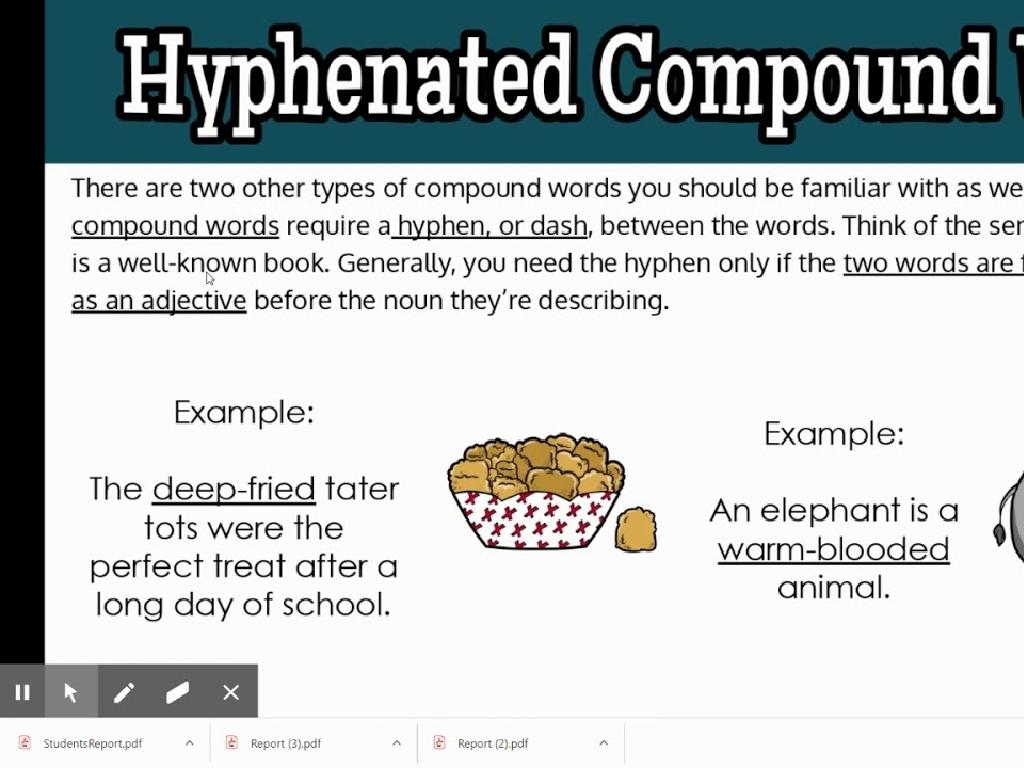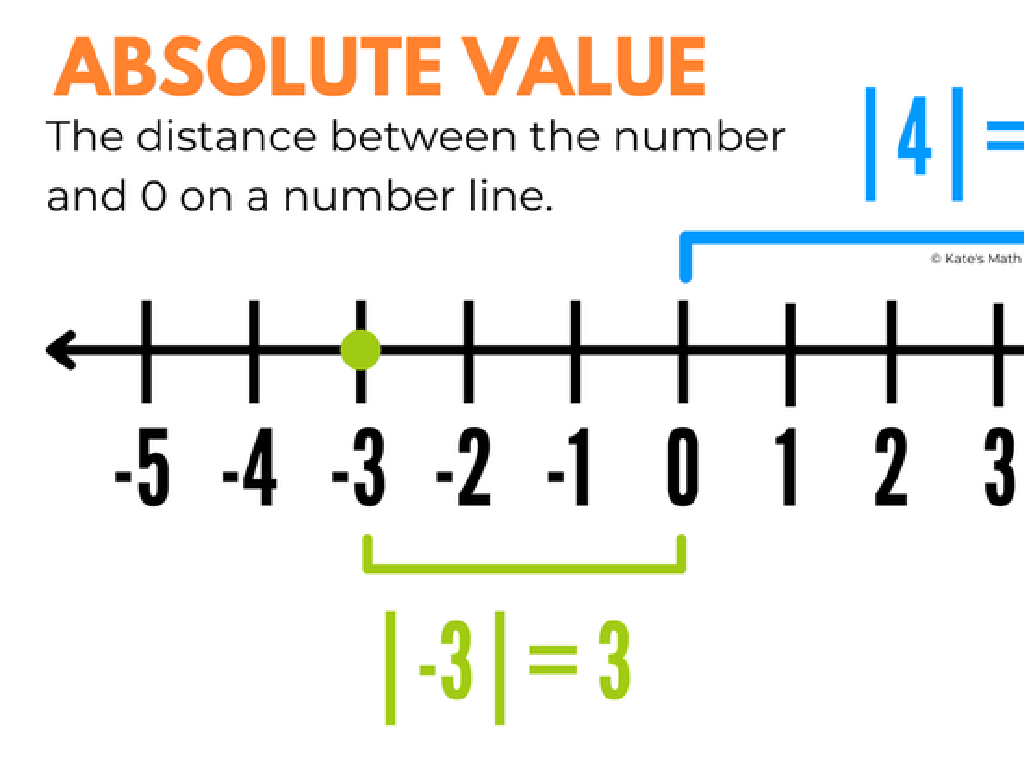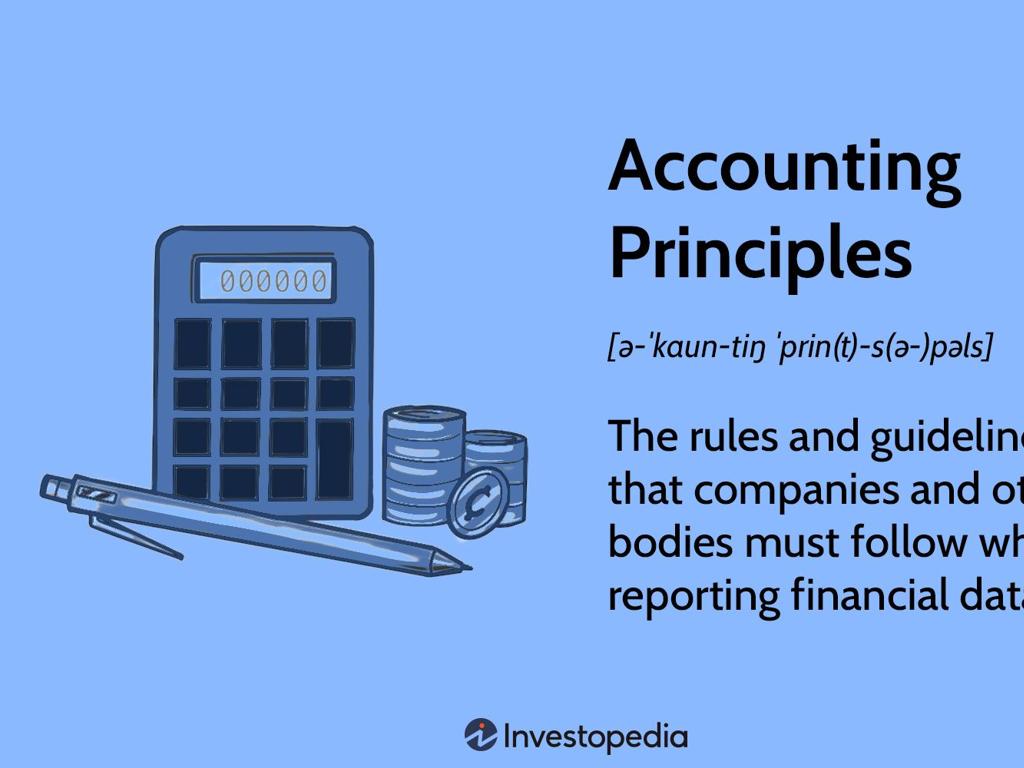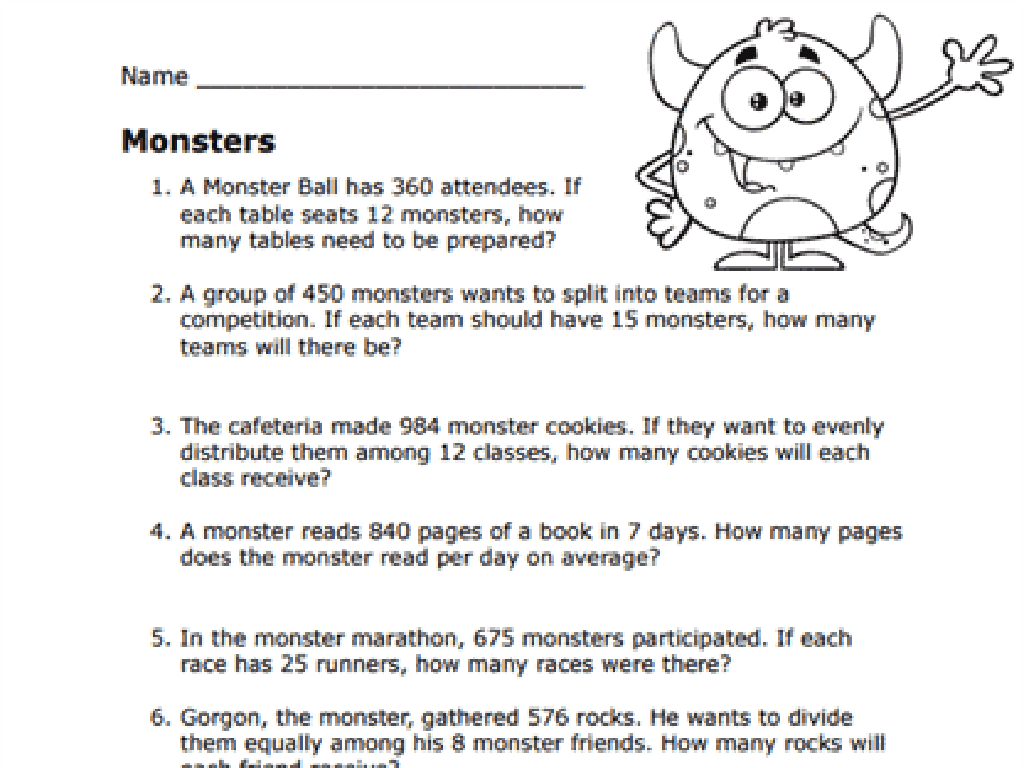Multiplication Patterns Over Increasing Place Values
Subject: Math
Grade: Fifth grade
Topic: Multiplication
Please LOG IN to download the presentation. Access is available to registered users only.
View More Content
Welcome to Multiplication Patterns!
– Greetings, young mathematicians!
– Let’s review multiplication basics
– Multiplication is repeated addition
– Discover patterns in multiplication
– Patterns show predictable relationships
– Patterns ease multiplication tasks
– Recognizing patterns helps solve problems faster
|
Begin the class with a warm welcome to set a positive tone for learning. Quickly review the concept of multiplication as repeated addition to ensure all students are on the same page. Introduce the idea that multiplication involves patterns, which can make it easier to understand and work with larger numbers. Emphasize how recognizing these patterns can simplify multiplication tasks, especially as place values increase. Encourage students to look for and use these patterns as a strategy to improve their multiplication skills. Provide examples such as multiplying by 10s, 100s, and so on, to demonstrate how the digits shift place values, creating a pattern that can be easily followed.
Multiplication and Place Values
– Review of place values
– Ones, tens, hundreds are the building blocks of numbers.
– Multiplying by 10, 100, 1000
– When we multiply by 10, 100, or 1000, the digits shift left, increasing their value.
– Single-digit multiplication by 10
– Example: 4 x 10 = 40. The 4 moves from the ones to the tens place.
– Single-digit multiplication by 100
– Example: 3 x 100 = 300. The 3 moves from the ones to the hundreds place.
|
Begin with a quick review of place values to ensure students remember the basics of ones, tens, and hundreds. Then, explain how multiplication by 10, 100, or 1000 shifts the digits to the left, increasing their place value and overall value of the number. Provide clear examples, such as multiplying single-digit numbers by 10 and 100, to illustrate the concept. For instance, show that multiplying 4 by 10 shifts the 4 from the ones place to the tens place, resulting in 40. Similarly, multiplying 3 by 100 shifts the 3 from the ones place to the hundreds place, resulting in 300. These examples will help students visualize the pattern and understand the relationship between multiplication and place value.
Multiplication Patterns with Place Values
– Multiplying by 10, 100, 1000
– Observe how numbers change: 3 x 10 = 30, 3 x 100 = 300
– Digits shift left with powers of 10
– Each power of 10 adds a zero, moving digits one place to the left
– Practice with pattern observation
– Try 4 x 10, 4 x 100, and 4 x 1000 to see the pattern
– Understanding the ‘zero’ rule
– Adding zeros for each power of 10 simplifies multiplication
|
This slide introduces students to the concept of multiplication patterns over increasing place values. Start by demonstrating how multiplying by 10, 100, and 1000 affects a single-digit number. Emphasize the pattern of shifting digits to the left, which is a visual representation of increasing place values. Provide practice problems to reinforce the concept and help students observe the consistent pattern. Explain that multiplying by powers of 10 is straightforward because it involves adding zeros to the original number, which is a key rule in multiplication. Encourage students to articulate the pattern and the ‘zero’ rule to deepen their understanding.
Zeroes and Place Value in Multiplication
– Understanding zeroes in multiplication
– Zeroes help us count place values when multiplying by 10, 100, 1000, etc.
– Zeroes reflect place value increase
– Adding a zero shifts the digits left, increasing the value tenfold
– Let’s work through examples
– Example: 23 x 10 becomes 230, 23 x 100 becomes 2300
– Practice makes perfect
|
This slide aims to clarify the concept of place value and the role of zeroes in multiplication for fifth-grade students. Begin by explaining that when we multiply a number by 10, 100, or 1000, we are essentially increasing its place value, which is visually represented by adding zeroes to the end of the number. Demonstrate this concept with clear examples, showing how each zero shifts the digits to the left, making the number ten times larger. Work through these examples interactively with the class to ensure understanding. Encourage students to practice with different numbers to gain confidence in recognizing patterns in place value when multiplying by powers of 10.
Applying Multiplication to the Real World
– Relate multiplication to daily life
– Use money to understand place values
– How multiplying dollars and cents shows place value changes
– Convert measurements with multiplication
– Use multiplication for inches to feet, or ounces to pounds
– Engage with interactive class examples
– Students solve real-life problems using multiplication
|
This slide aims to help students apply their knowledge of multiplication patterns to real-world scenarios, making the concept more tangible and easier to grasp. By using everyday examples such as money, where multiplying by 10 moves the decimal place to the right, students can see the practical application of place value patterns. Measurement conversions provide another concrete example, where multiplying units can convert a smaller unit to a larger one, such as inches to feet. Interactive examples, such as calculating total costs or converting measurements, will involve student participation and reinforce their understanding through practice. The teacher should prepare several scenarios beforehand for the interactive portion, ensuring a range of difficulties to accommodate all students.
Let’s Practice Multiplication Patterns
– Practice with place value multiplication
– Identify patterns in calculations
– Notice how zeros increase with place values
– Pair up to solve and observe
– Share strategies and compare results
– Discuss findings with the class
|
This slide is designed for a class activity where students will engage in hands-on practice to understand multiplication patterns related to increasing place values. Students should be encouraged to look for and discuss the patterns they observe, such as the increase in the number of zeros as they multiply by 10, 100, or 1000. Working in pairs will allow them to collaborate and learn from each other’s strategies. After the activity, facilitate a class discussion where pairs can compare their observations and findings. This will help reinforce their understanding of place value in multiplication and how it affects the product. Provide examples like 4 x 100 = 400 and 4 x 1000 = 4000 to illustrate the pattern of increasing zeros.
Class Activity: Multiplication Pattern Hunt
– Engage in a ‘Multiplication Pattern Hunt’
– Find patterns in objects and numbers
– Look for patterns in objects like tiles, windows, or book arrangements
– Share discoveries with classmates
– Each student presents their unique findings
– Discuss the patterns observed
– Explore how multiplication is used in patterns
|
This interactive class activity is designed to help students recognize and understand multiplication patterns in a fun and engaging way. By searching for real-life examples of multiplication, students will see the practical application of the concept. Encourage them to look for arrays, repeated addition, and geometric patterns in the classroom environment. After the hunt, facilitate a discussion where students can share their findings and explain the multiplication patterns they observed. This will reinforce their understanding and allow them to learn from each other’s observations. Possible activities could include finding patterns in seating arrangements, the number of books on a shelf, or the layout of floor tiles. The goal is to make multiplication tangible and to show its presence in everyday life.
Conclusion: Multiplication Patterns Mastery
– Recap of multiplication patterns
– Significance of pattern recognition
– Recognizing patterns makes multiplication easier.
– Open floor for questions
– Clarify any doubts
|
As we wrap up today’s lesson, it’s crucial to revisit the key concepts of multiplication patterns over increasing place values. Emphasize how recognizing these patterns can simplify the process of multiplication and enhance mental math skills. Encourage students to ask any lingering questions they might have and use this opportunity to address any uncertainties. Ensure that each student leaves the class with a clear understanding of the topic. You can also suggest additional practice problems for students to reinforce their learning at home.






